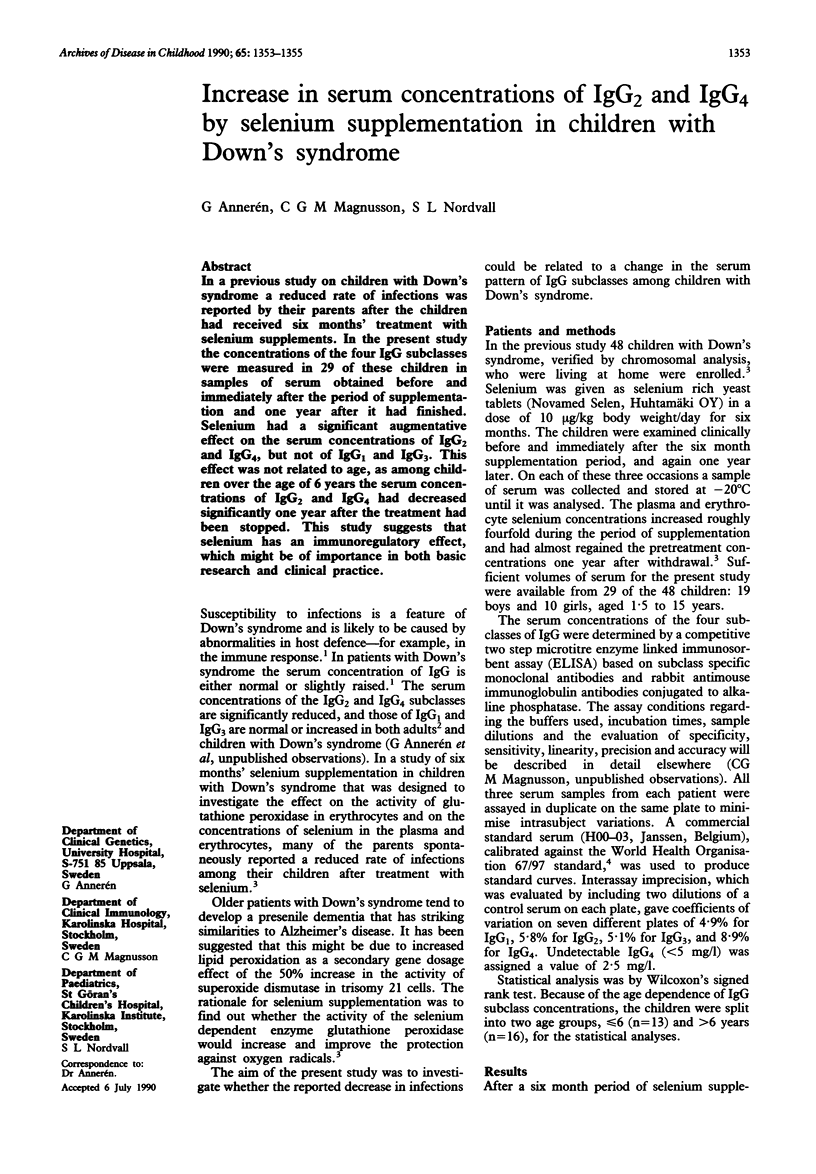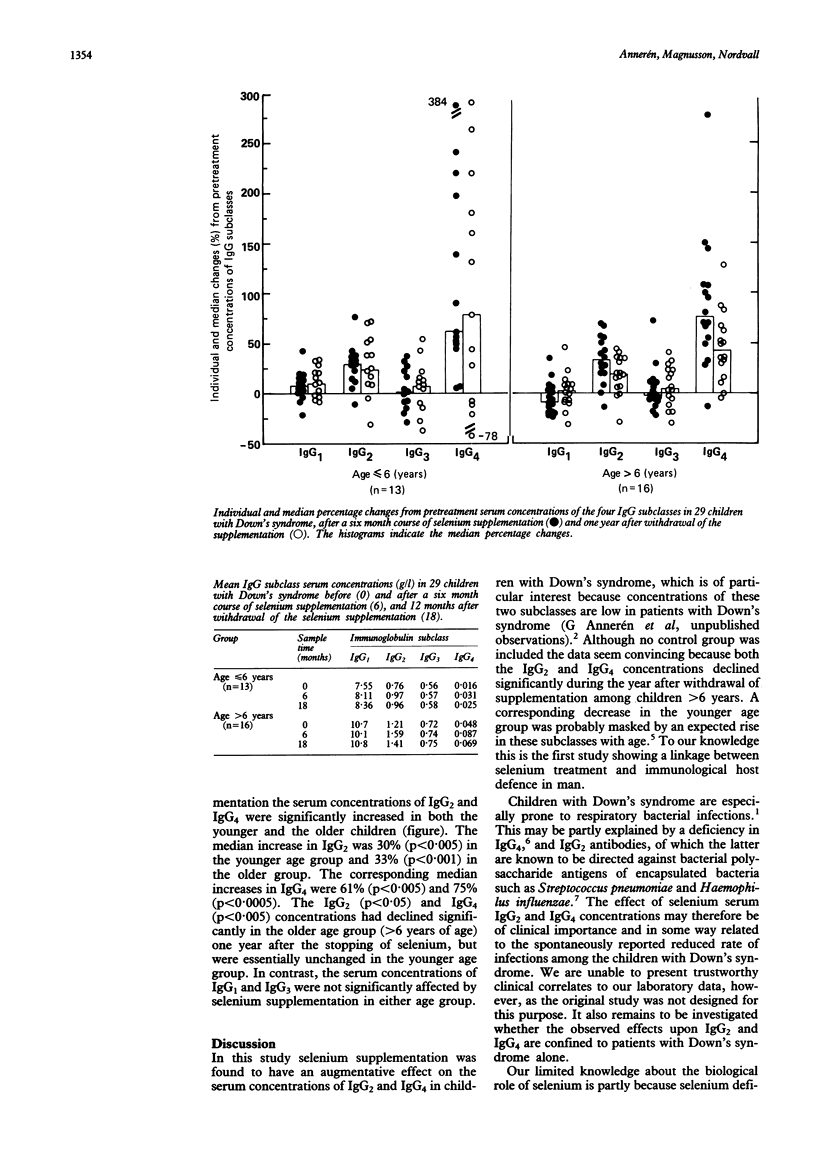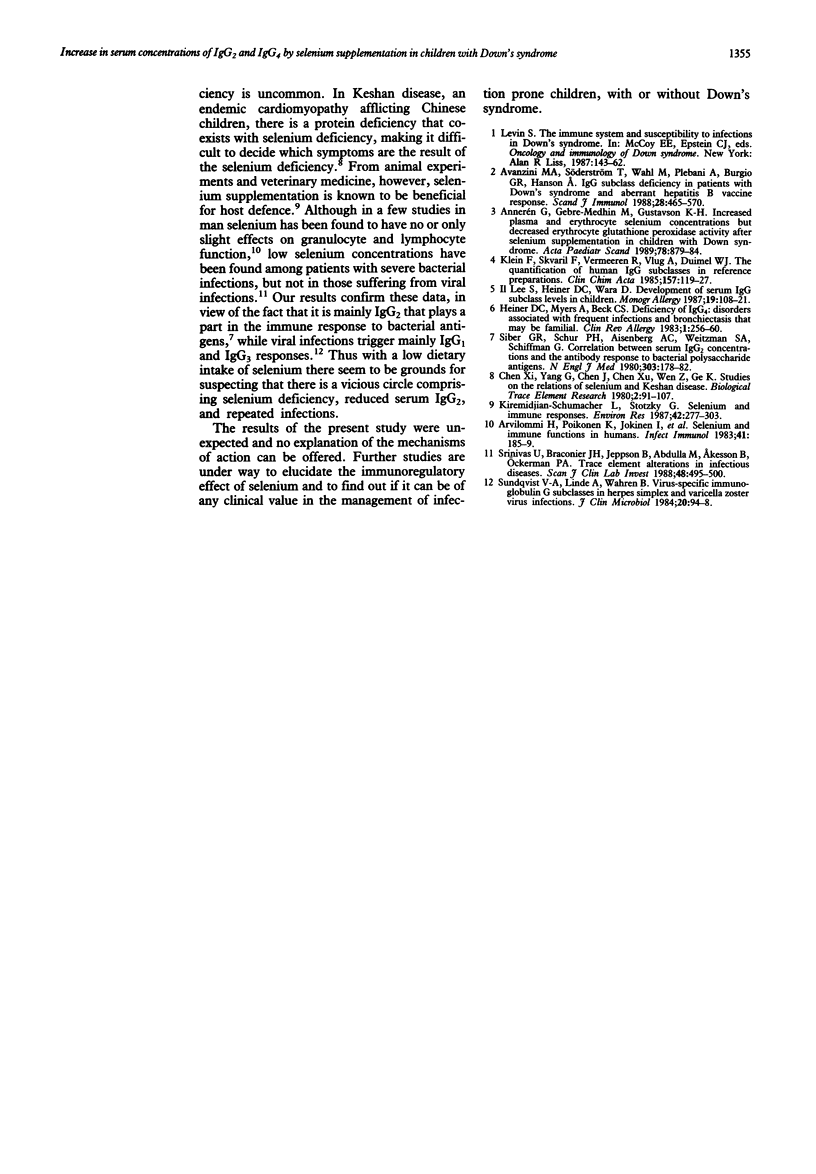Abstract
In a previous study on children with Down's syndrome a reduced rate of infections was reported by their parents after the children had received six months' treatment with selenium supplements. In the present study the concentrations of the four IgG subclasses were measured in 29 of these children in samples of serum obtained before and immediately after the period of supplementation and one year after it had finished. Selenium had a significant augmentative effect on the serum concentrations of IgG2 and IgG4, but not of IgG1 and IgG3. This effect was not related to age, as among children over the age of 6 years the serum concentrations of IgG2 and IgG4 had decreased significantly one year after the treatment had been stopped. This study suggests that selenium has an immunoregulatory effect, which might be of importance in both basic research and clinical practice.
Full text
PDF


Selected References
These references are in PubMed. This may not be the complete list of references from this article.
- Annerén G., Gebre-Medhin M., Gustavson K. H. Increased plasma and erythrocyte selenium concentrations but decreased erythrocyte glutathione peroxidase activity after selenium supplementation in children with Down syndrome. Acta Paediatr Scand. 1989 Nov;78(6):879–884. doi: 10.1111/j.1651-2227.1989.tb11167.x. [DOI] [PubMed] [Google Scholar]
- Arvilommi H., Poikonen K., Jokinen I., Muukkonen O., Räsänen L., Foreman J., Huttunen J. K. Selenium and immune functions in humans. Infect Immun. 1983 Jul;41(1):185–189. doi: 10.1128/iai.41.1.185-189.1983. [DOI] [PMC free article] [PubMed] [Google Scholar]
- Avanzini M. A., Söderström T., Wahl M., Plebani A., Burgio G. R., Hanson L. A. IgG subclass deficiency in patients with Down's syndrome and aberrant hepatitis B vaccine response. Scand J Immunol. 1988 Oct;28(4):465–470. doi: 10.1111/j.1365-3083.1988.tb01477.x. [DOI] [PubMed] [Google Scholar]
- Kiremidjian-Schumacher L., Stotzky G. Selenium and immune responses. Environ Res. 1987 Apr;42(2):277–303. doi: 10.1016/s0013-9351(87)80194-9. [DOI] [PubMed] [Google Scholar]
- Klein F., Skvaril F., Vermeeren R., Vlug A., Duimel W. J. The quantification of human IgG subclasses in reference preparations. Clin Chim Acta. 1985 Aug 15;150(2):119–127. doi: 10.1016/0009-8981(85)90262-1. [DOI] [PubMed] [Google Scholar]
- Lee S. I., Heiner D. C., Wara D. Development of serum IgG subclass levels in children. Monogr Allergy. 1986;19:108–121. [PubMed] [Google Scholar]
- Levin S. The immune system and susceptibility to infections in Down's syndrome. Prog Clin Biol Res. 1987;246:143–162. [PubMed] [Google Scholar]
- Siber G. R., Schur P. H., Aisenberg A. C., Weitzman S. A., Schiffman G. Correlation between serum IgG-2 concentrations and the antibody response to bacterial polysaccharide antigens. N Engl J Med. 1980 Jul 24;303(4):178–182. doi: 10.1056/NEJM198007243030402. [DOI] [PubMed] [Google Scholar]
- Srinivas U., Braconier J. H., Jeppsson B., Abdulla M., Akesson B., Ockerman P. A. Trace element alterations in infectious diseases. Scand J Clin Lab Invest. 1988 Oct;48(6):495–500. doi: 10.3109/00365518809085763. [DOI] [PubMed] [Google Scholar]
- Sundqvist V. A., Linde A., Wahren B. Virus-specific immunoglobulin G subclasses in herpes simplex and varicella-zoster virus infections. J Clin Microbiol. 1984 Jul;20(1):94–98. doi: 10.1128/jcm.20.1.94-98.1984. [DOI] [PMC free article] [PubMed] [Google Scholar]


